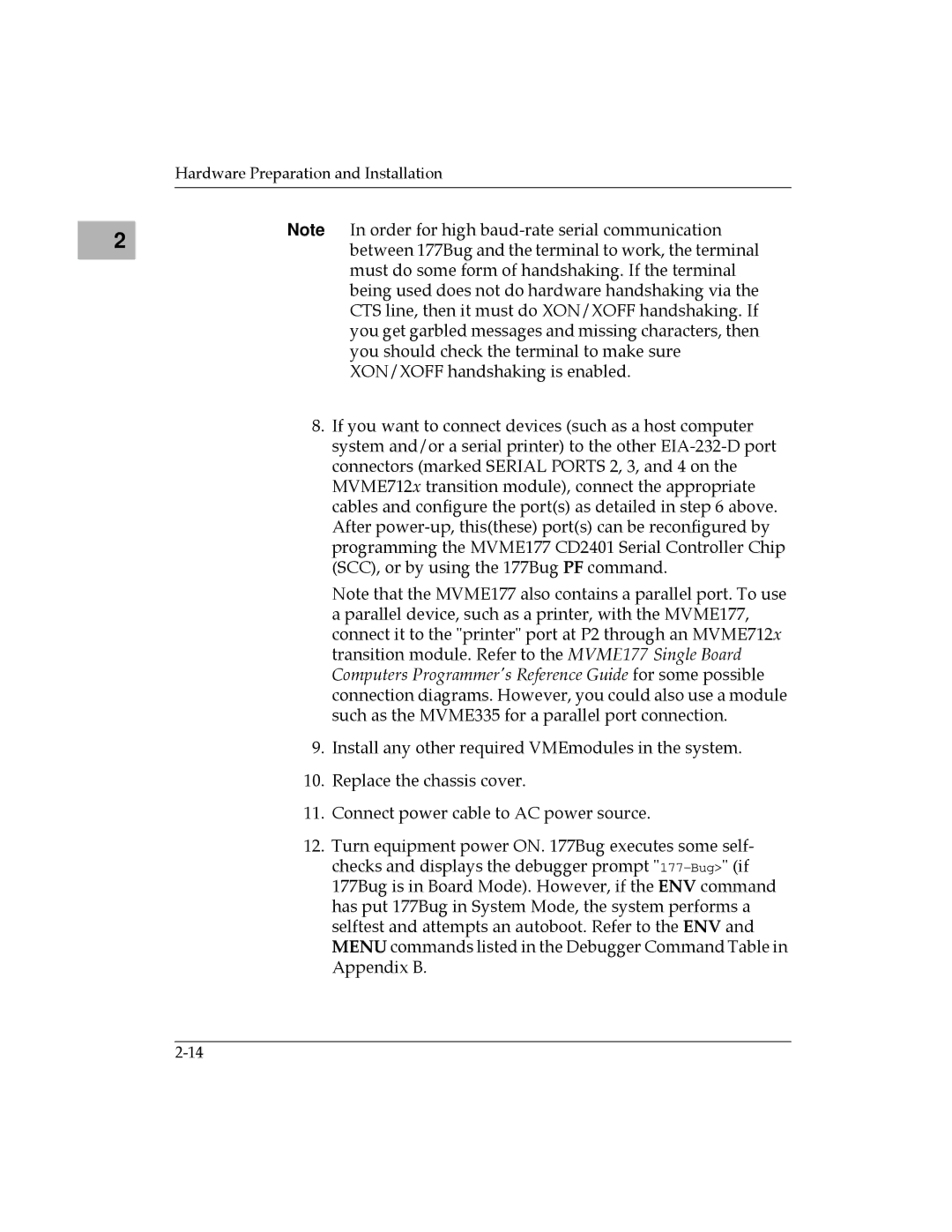Hardware Preparation and Installation
Note In order for high baud-rate serial communication between 177Bug and the terminal to work, the terminal must do some form of handshaking. If the terminal being used does not do hardware handshaking via the CTS line, then it must do XON/XOFF handshaking. If you get garbled messages and missing characters, then you should check the terminal to make sure XON/XOFF handshaking is enabled.
8.If you want to connect devices (such as a host computer system and/or a serial printer) to the other EIA-232-D port connectors (marked SERIAL PORTS 2, 3, and 4 on the MVME712x transition module), connect the appropriate cables and configure the port(s) as detailed in step 6 above. After power-up, this(these) port(s) can be reconfigured by programming the MVME177 CD2401 Serial Controller Chip (SCC), or by using the 177Bug PF command.
Note that the MVME177 also contains a parallel port. To use a parallel device, such as a printer, with the MVME177, connect it to the "printer" port at P2 through an MVME712x transition module. Refer to the MVME177 Single Board Computers Programmer's Reference Guide for some possible connection diagrams. However, you could also use a module such as the MVME335 for a parallel port connection.
9.Install any other required VMEmodules in the system.
10.Replace the chassis cover.
11.Connect power cable to AC power source.
12.Turn equipment power ON. 177Bug executes some self- checks and displays the debugger prompt "177-Bug>" (if 177Bug is in Board Mode). However, if the ENV command has put 177Bug in System Mode, the system performs a selftest and attempts an autoboot. Refer to the ENV and MENU commands listed in the Debugger Command Table in Appendix B.

